If you do not want to set up your own server, you can use the web application provided by the CAM-AI server. Here is how:
Before you start using the web server app we recommend that you set up your camera to match with the CAM-AI server. Click here to continue with the camera setup.
Also, you need to make sure that the CAM-AI server can connect to your camera from the internet. To enable this, you need to configure your router to supply port sharing and dynamic DNS.
Now you need to get an account on the selected server. Here is how.
Add your camera feed to the system
Login with your new username and password. That will bring you to the main menu of the web application:

Click on “Cameras” and then on “Camera installation (ONVIF/ISAPI)”. If you are an expert user you choose “Expert install” to use different ports and options. Jump to Expert install instructions. For all other user we recommend following the next steps:
IEnter the address (domain or IP) that your camera can be reached on the internet. If you gave your router a dynamic DNS name, enter it here (for example 5vlz1123456o0ihw.myfritz.net). If your router (and thus your camera) has a static IP, you can just enter that here (for example 77.9.50.152). Make sure you have properly set up the port forwarding in your router: For “Camera installation (ONVIF/ISAPI)” these are usually ports 8000 or 80.
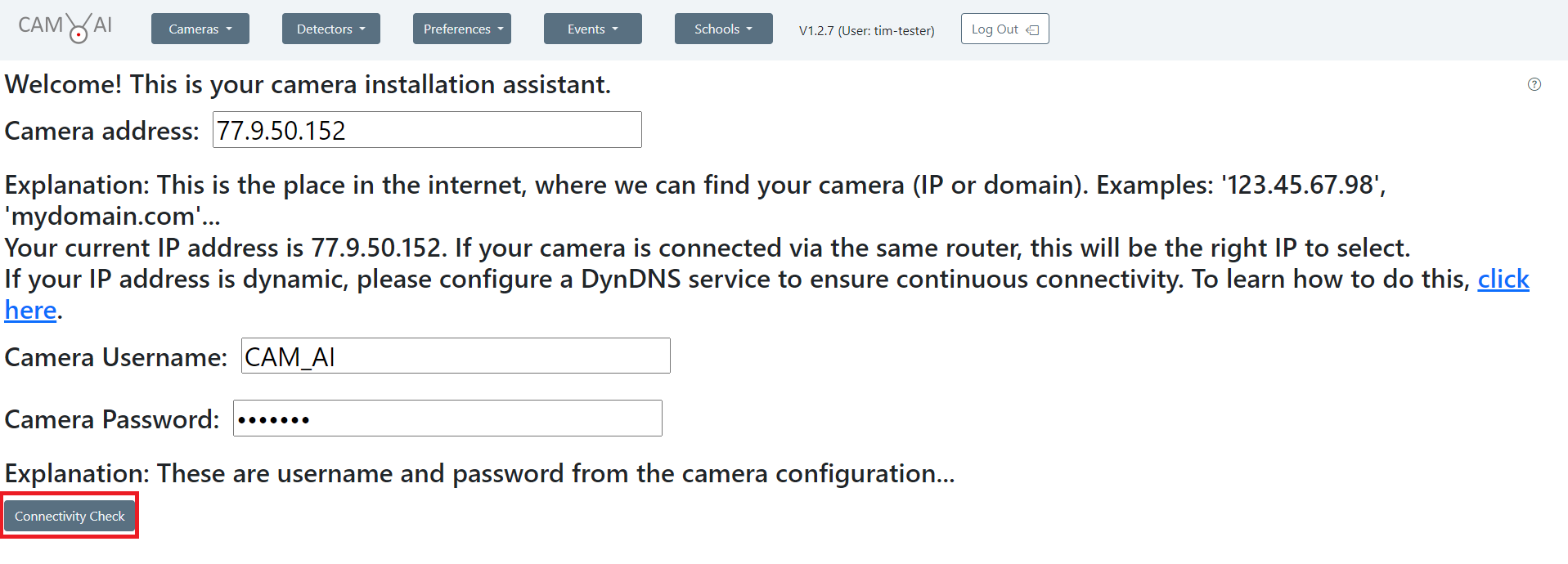
Next, enter user name and password for your camera (not your CAM-AI credentials) and submit the “Connectivity Check” button. Wait a moment until your camera is found:

Click “Install this camera” and wait until your camera is launched.
Expert install
Select the port of your camera or type it directly into “Custom Port”. To be sure, you can select all ports.
After clicking the “Check” button you should find your router and all available ports, including that of your camera. (Here 1935/11935 RTMP). Click the “Install this one” button, even if your exact port might not be listed in the list.
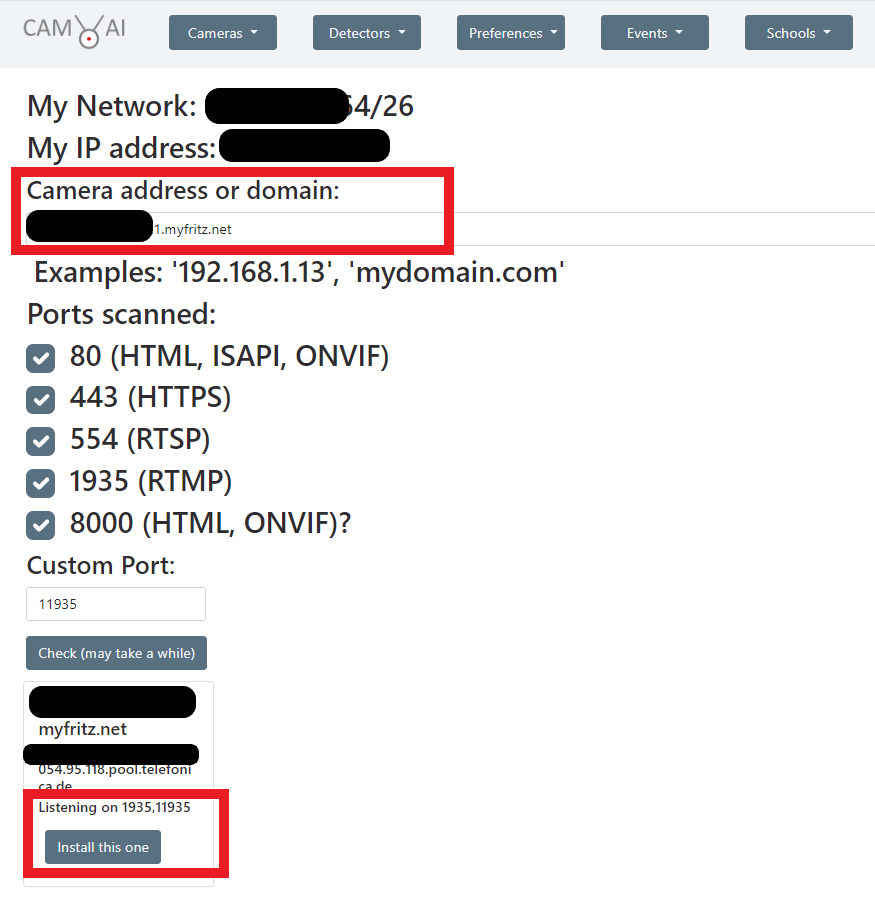
You should be able to find and identify your camera in the boxes at the bottom of the screen (here we have just one box). You select “Install this one”.
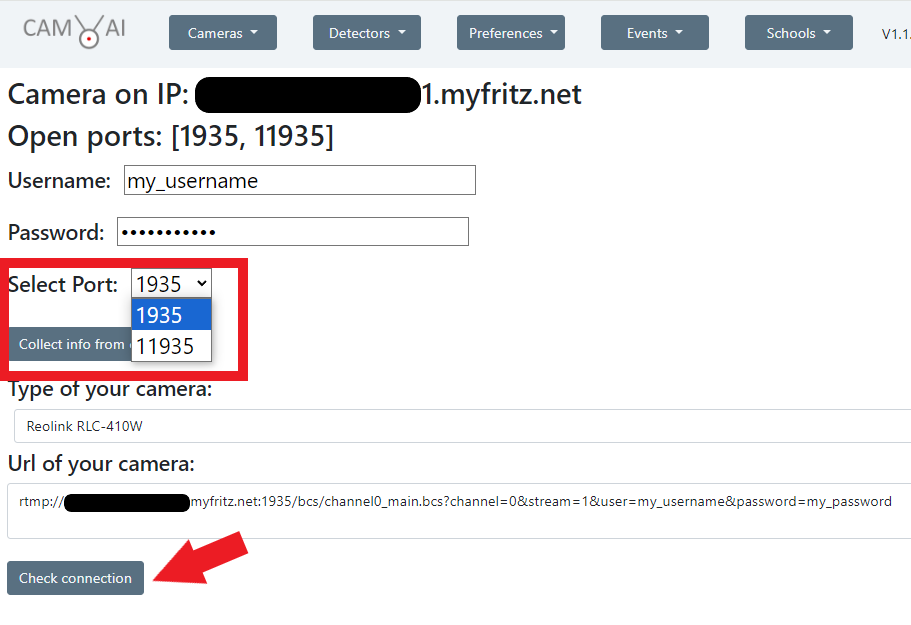
Enter the user name, password and select the external port configured for that camera.
Now, there are three options to connect your camera:
1.) Your camera type is in the dropdown menu: Select your type and the URL for the camera gets automatically composed.
2.) Your camera is not on the list: You have the option to enter the stream URL directly. In case your camera supports streams (like e.g. RTMP or RTSP), search the URL of your stream on the website of your camera or in related posts to this topic. Make sure the URL contains your individual username, password, and the external port of your camera.
3.) If options 1.) and 2.) were not successful or if you want to use the PTZ features of your camera, you can collect the needed information from the ISAPI- and the ONVIF interface of your camera (if supported) by pushing the “Collect”-button:
IMPORTANT: If you gave your port another external name than the original one (e.g. 10554 instead of 554) you can choose this port from the “Select Port:” field, and the link will be generated like this example:
rtsp://username::10554/live/ch1
This is a common case when connecting two or more cameras listening to port 554, for example: Camera1 external port = 554, Camera2 external port = 10544, Camera3 external port = 20544. So, each camera must have its own unique external port.
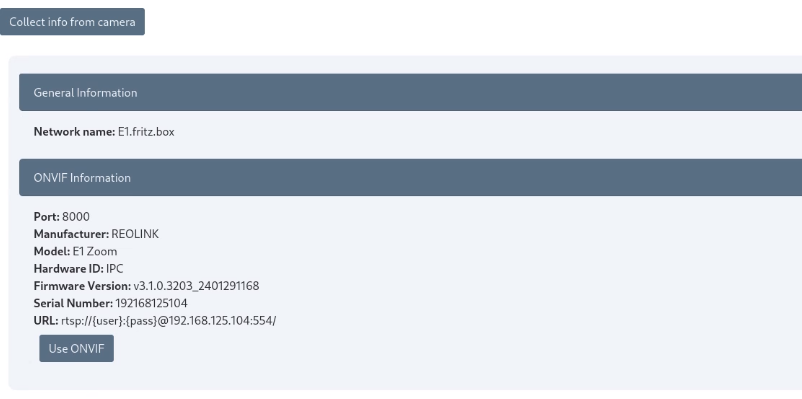
In the next step, you can choose from the control modes (ISAPI or ONVIF) that your camera supports. Again, the camera URL is composed automatically. Now you can connect to that camera for the last step by clicking “Check connection”:
Next, you get a list of available video and audio modes from that camera.

Once you are done selecting, click “Install this camera” (may take up to 2 minutes).
Now, click once more on “Cameras” in the menu. Wait for the camera image to show up.
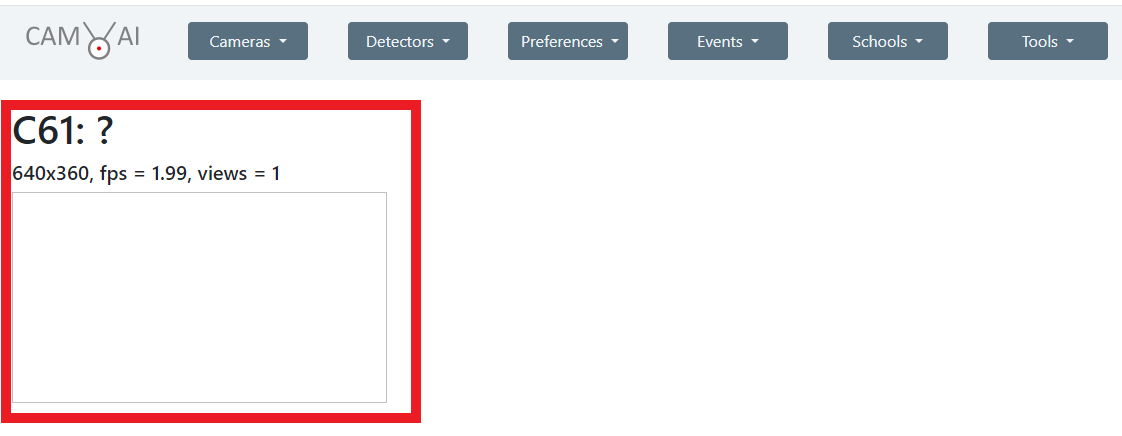
Click in the box under the name of your camera. That should bring up a live feed of your camera to your screen. Now you can change the name of “NewStream” under “General Settings”.
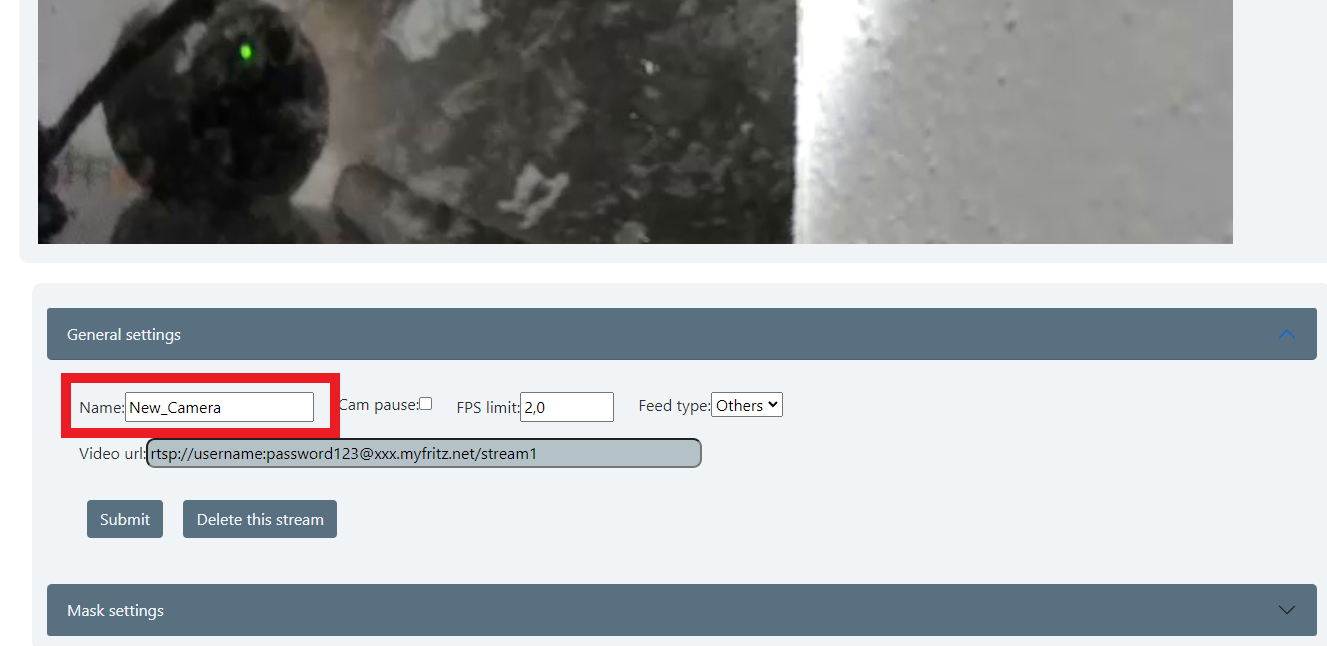
Your new camera stream is using artificial intelligence in standard mode, operating on a standard model (or “school”). To improve the accuracy of object recognition, you can set up your own school, train it on your camera, and use it.
Once you are done installing, you might want to continue reading the user manual.
